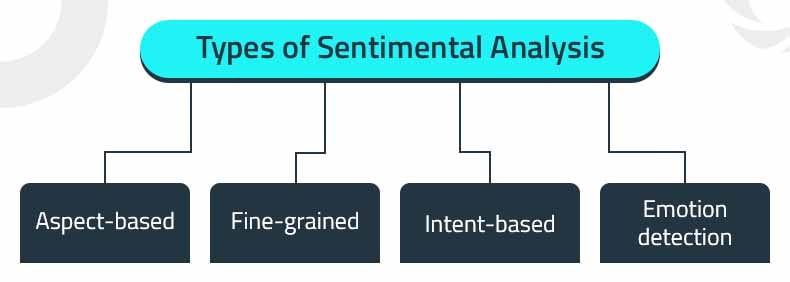Artificial intelligence | 04 May 2022 | 11 min
A Guide to Sentiment Analysis – Part 1

Chances are that your recent web searches include ‘how to figure out customer feedback’ or ‘how to read customers’ minds’. Well, as it turns out, that’s one thing you can cross off your task list if you add sentiment analysis to your arsenal! Allow me to clarify that one of the most popular applications of this activity is analyzing customer feedback. There are more, of course, which you will discover shortly as you read on!
In my blog today, I’m going to elaborate on the following points:
Sentiment analysis is used to determine sentiments such as positive, negative, or neutral in a sentence, paragraph or document.
It is an automated process to analyze data and interpret the sentiments behind it. Through machine learning and text analytics, algorithms can classify or score documents as positive, negative, or neutral. This process is also known as ‘opinion mining’ and is often used by businesses to detect sentiments in social media, quantify brand reputation, and acknowledge customers.
Next, allow me to explain the classification of this interesting process.
Take a look at the four types of sentiment analysis:

1. Aspect-based: Aspect-based sentiment analysis is a text analysis technique that categorizes text data based on its aspects and identifies its sentiment. It is used to examine customer feedback data through the correlation of sentiments to several aspects of a product or service.
For example, if a company that sells mobile phones uses this type of sentiment analysis, it could be for one aspect of mobile – like camera, touch, body, display, etc. So, they can figure out how customers perceive attributes of the product.
2. Fine-grained: When you have clearly analyzed the sentiments then you can use this type to determine polarity. Sentiment analysis can be performed across the following readily available sentiment categories: very positive, positive, neutral, negative, or very negative. For example, on a scale of 1 to 5, consider 1 to be extremely negative and 5 to be extremely positive. On a scale of 1 to 10, you could consider 1-2 to be highly negative and 9-10 to be highly positive.
3. Intent-based: Understanding the intent of the customers – whether they are looking to buy the product or not – is achievable through intent analysis. It helps not only to identify the intent of the customers but also to track and target them through marketing and advertising.
4. Emotion detection: Emotion detection aims to detect and recognize types of feelings through the expression of texts, such as anger, disgust, fear, happiness, sadness, and surprise.
The advantage of using this is that a company can understand why a customer feels a particular way, but it can also be highly challenging as people may use complicated sentences to express their feelings.
Now that you are aware of its types, let us dwell on the importance and applications of sentiment analysis.
Sentiment analysis has an impressive array of purposes and applications. It plays an extensive role in understanding people belonging to different groups and their sentiments. It helps businesses to discover what their customers are saying about their products and why they are saying it. It helps to answer questions like what features of a product customers like or dislike, what their feelings are or what motivates them to leave such feedback.
Here are a few applications of sentiment analysis –
1. Marketing strategy improvement: Brands can use sentiment analysis to dictate whether their social media marketing strategy is functional and what changes they need to make to become different from others.
2. Enhancement in customer service: Sentiment analysis can help to identify trends in customer sentiments across times of day, locations, product references, and more. They can be used to monitor agent interactions with customers and to facilitate better customer training, as well attend to customer complaints, avoid making them feel ignored.
3. Assistance with lead generation: Sentiment analysis can also help you figure out loyal customers, which can help to form a new or loyal customer base.
4. Brand/product monitoring: Brands or companies can monitor their mention on social media platforms and determine the emotions a customer has for them or their products. The mentions can be impressionistic, and emotions can be isolated based on the product or service. It can reveal which product needs enhancement and which quality is most liked by the customer.
Now it’s time to consider the challenges involved in the process of sentiment analysis.
1. Tone: There are two types of text: subjective and objective. Objective texts do not comprise definite sentiments, while subjective texts do. Brands may find it challenging to find subjective sentiments and analyze them with respect to their intended tone.
2. Context polarity: Sometimes a word is easy in polarity such as ‘good’ which is plain positive or ‘bad’ which is negative. But certain in-between conjugations of words such as ‘not so good’, can diminish the accuracy of statistical models.
3. Sarcasm/Emojis/Irony: When it comes to irony, sarcasm and emojis, people express their negative or positive sentiments using words or symbols, which can be difficult for machines to detect without having a complete understanding of the situational context.
4. Anaphora resolution: Anaphora occurs when there is repeated reference to the same entities in a discourse. For example: ‘John helped Sam. He was kind.’ These references on a whole can dilute a model’s accuracy.
5. Comparatives: Comparative sentences are not opinions and can be tricky most of the time. For example: ‘The new Nokia Lumia 920 camera is better than the Samsung Galaxy S4 camera.’ This sentence doesn’t state polarity; rather, some ordering is mentioned, which can potentially diminish a model’s accuracy.
In conclusion, I must mention that it is important to understand your customers’ feedback about your products. After all, customers are the backbone of any company and to understand them, we can leverage the power of sentiment analysis.
In my next blog, we will deep dive into how to do sentiment analysis and see how it can help us to understand sentiments.

Meanwhile, do email us at Nitor Infotech with your thoughts about this blog and click here to explore how we harness the immense power of cognitive technology to enrich businesses.

we'll keep you in the loop with everything that's trending in the tech world.
